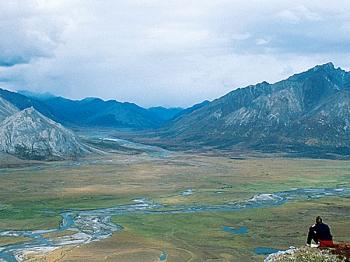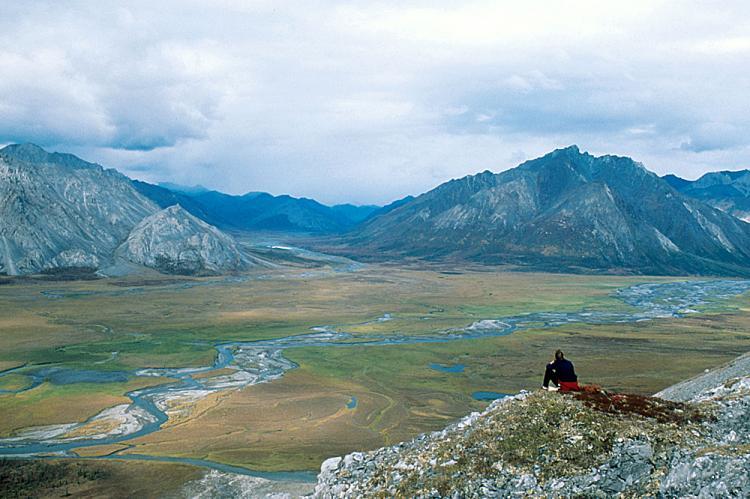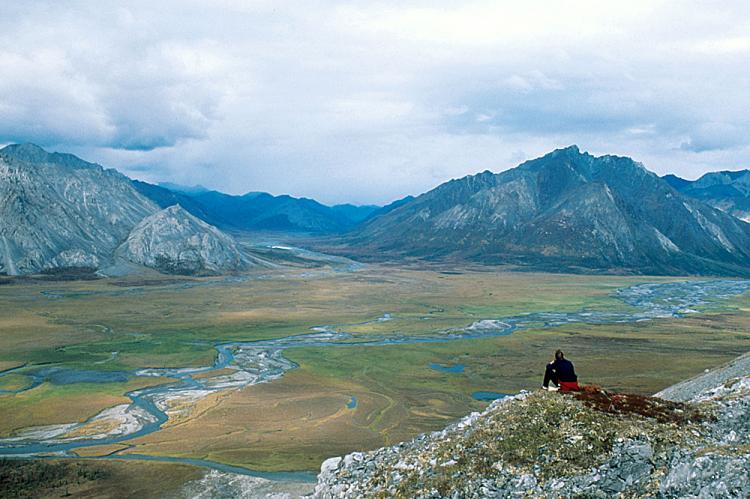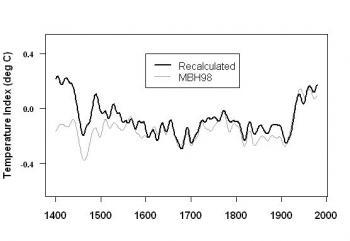It’s no wonder that Alaska has again taken center stage early in the 21st Century. It was more than 100 years ago, in 1902 that the first Alaska Crude Corp. oilrigs appeared there. Today, with the price of oil over $145 per barrel, resulting in a nation average gasoline well over $4 per gallon, the frenzy to become less dependent on foreign oil has prompted oil suppliers to once again look at Alaska.
One contentious topic currently under debate: Should the U.S. allow an increase of oil drilling in a remote northern area of Alaska known as the Arctic National Wildlife Refuge (ANWR)? Proponents of both sides of the argument have used photos showing contrasting views of the Alaskan wilderness to help illustrate their arguments. Those against the drilling use pictures of pristine mountains, teeming with wildlife and beautiful forests, while those for drilling show pictures of a frozen, barren wasteland. What’s the real story?
Alaska Governor Sarah Palin (R) recently submitted a letter to Senate Majority Leader Harry Reid (D-NV) on the importance of ANWR in dealing with the energy crisis. Palin, like many Alaskan governors before her, is extremely passionate in vocalizing her belief that ANWR is an essential resource for oil and gas development, particularly a small region known as the 10-02 area.
ANWR is a 19 million acre refuge that lies in the top northeast corner of Alaska. The area called 10-02 is named after section 10-20 of the Alaska National Interest Lands Conservation Act (ANILCA), a congressional bill that expanded ANWR in 1980. 10-02 occupies 2000 acres, or roughly 3 square miles, of ANWR, and is legally classified as neither refuge nor wilderness. Congress originally set the area aside specifically for oil and gas exploration due to overwhelming geological evidence of large hydrocarbon deposits. The 10-02 area is completely flat and barren, with no trees, hills, or mountains. Nine months out of the year it’s covered with snow and ice and practically void of life. Three of those months are in total 24-hour darkness. In the 6 weeks of summer the coastal plain is dotted with thousands of lakes and is covered by boggy tundra on permafrost (permanently frozen ground).
Governor Palin argues that increasing oil production at ANWR will benefit the nation with long-term jobs in all 50 states for services, infrastructure construction, and maintenance. According to Palin, the federal taxes from oil production, generating $200 billion, would be used to fund alternative energies and future energy development for the next three decades. The Governor estimates that the ANWR oil is worth 1.3 trillion dollars to the nation at today’s prices.
Clayton Daughenbaugh, a spokesman for the Sierra Club, said the ANWR drilling plan has no real benefits.
“The Bush administration is claiming the ANWR drilling plan will lower the prices of gas. Yet, it has nothing to do with it,” Daughenbaugh said. “It will be 10 years before we get oil, and the amount of oil is not sufficiently significant to make a noticeable impact on gas prices. The Bush administration is pulling the wool over the eyes of Congress for their greed in favor of oil development.”
Sen. Reid, a staunch foe of increased production at ANWR, along with Senator Hillary Clinton (D-NY), Senator Maria Cantwell (D-WA), and Senator John Kerry (D-MA), have all worked hard to nix Alaskan’s efforts to tap oil reserves in the 10-02 area. Their arguments against increased oil development reference Sierra Club rhetoric on environmental issues and economic statistical analysis, despite the fact that Reid’s own state of Nevada is totally reliant on outside sources for all its transportation fuel. Half of Nevada’s electricity comes from coal and natural gas, the lion’s share coming from out of state.
This is the tip the iceberg of controversy surrounding the argument over drilling for oil on U.S. soil. Today there are as many as 20 pending congressional bills that would mandate the opening of ANWR 10-02 to development.
House Minority Natural Resources Committee Chairman Don Young (R-AK) introduced The American Energy Independence and Price Reduction Act known as HR 6107. The bill was co-sponsored by Rep. Roscoe Bartlett (R-MD). The bill calls for the opening of the 10-02 Area of ANWR to responsible oil and gas development, and requires that funds generated from oil production taxes be used to set up an Alternative Energy Trust Fund, promoting the development and production of alternative energies. Bartlett, with a history opposing ANWR, recently held a conference on Capitol Hill announcing his change of heart, conceding the enormous economic benefit of ANWR oil development at a time when the nation is being hit with record high prices from OPEC.
Rep. James Walsh (R-NY), also a long-standing opponent of ANWR legislation, announced his change of opinion, saying, “I’ve always taken the position that we should retain that oil in reserve. As long as it’s in the ground we can use it in the event of an emergency, and I think what is happening today constitutes an energy emergency. I think we need to go, in an environmentally sensitive way, to take that oil out.”
Rep. Steve King (R-IA) told a radio audience in a recent interview with Glenn Beck, “I flew over and I also went down on the ground, I talked to the Eskimos there that want to drill. It’s 19.6 million acres. There’s not a single tree in that entire area, not for 700 miles from where they want to drill for oil. This is a carbon copy of the ecosystem that we drilled in the north slope of Alaska in the early seventies.”
For many the question is, “Should we utilize the resources in places like ANWR, or leave them to the sparse population of wildlife in the area.” When weighing all the factors it becomes evident that there’s more to it than the classic “humans vs. wildlife” debate.




